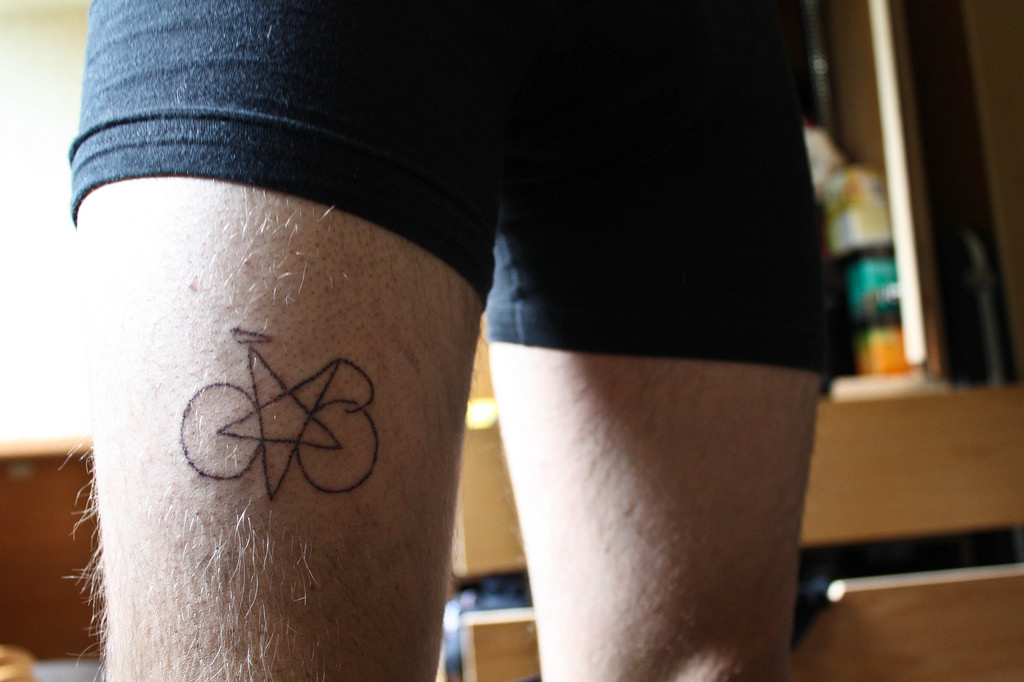Over the past few years, “stick and poke” tattoos have been re-gaining their rightly deserved spot in tattoo culture across the globe. With the “stick and poke” method being the simplest way to tattoo (and debatably the most intimate), as well as the oldest tattooing technique known to man, what makes this form of tattooing so special?
If you’re unsure of what the difference is between a tattoo created by a tattoo machine in comparison to a “stick and poke” tattoo, allow me to explain. A tattoo machine is made up of a bunch of tiny needles that vibrate and prick the first few layers of the skin with the ink. It’s the faster method of tattooing, and arguably the more known method of tattooing. With a stick and poke tattoo, the tattoo is done with a single needle, occasionally dipped into a pot of ink. These tattoos tend to be closer to the surface of the skin and are not as “deep” as those created by a gun.
As a woman of a fair few tattoos, I can confirm that I actually prefer the “stick and poke” style of tattooing – and for a few reasons. Despite my immense phobia of needles, this method of tattooing actually felt a lot less painful than my other tattoos that were created by the machine method. Also, there’s something extremely intimate about stick and poke tattoos. Whether it’s the fact they are done purely by hand and a single needle without the aid of a machine (therefore making them far more time consuming), allowing you to spend more time with the artist putting this art on your body forever – or even the concept of how there’s no technology/machines involved in the tattooing process – just a needle, ink, your skin and a pair of hands.
The single needle and ink technique dates back as far as ancient Egypt, with mummies being found with tattoos inked on their fingers, and cultures in certain parts of the world tattooing themselves and others using natural objects such as bamboo sticks (Thailand) and other materials found within nature. In the West, tattoos have been nothing but a rollercoaster of opinions and thoughts. Tattooing tools were found as far back as to the 4th millennium BC in France, Scandinavia and Portugal and were considered an important part of identity and history. Then they suddenly were deemed as unsuitable when Christianity became popular in the West, as it was considered a “barbaric tradition”. From then on, tattoos were also considered a symbol of class, primarily reserved for sailors and those in the working class. This coincides with Ancient Egyptian and Indian cultures, where they were considered marks of status in society but also in some cases were considered punishments.
In the 21st century, stick and poke is slowly overtaking the tattoo machine technique, and if anything, it’s becoming the preferred tattooing method. The ability to be able to hear the tattoo ink hit your skin, hear the stories that your tattooist will tell you about their craft (or life) while they oh-so-carefully create a piece of incredible art that they merge with your skin. There is an oddly calming and comforting atmosphere that arises from a stick and poke session – the lack of noise from the tattoo machine in a busy shop (as exciting and adrenaline pumping as that can be), the absence of excess tools or materials in order to create the tattoo… It’s quite challenging to try and place a finger on why it feels different to the “standard way” of tattooing. It feels very intimate and very sacred, and in some ways, it creates a bond between you and the tattooist that no one else will ever have.
My first stick and poke tattoos took place on a disinfected, cling-filmed covered table in one of my best friends’ studio in Bethnal Green in East London. I was lucky enough to be tattooed by one of her lovely friends Liz, who made me feel so comfortable and calm throughout the entire process. I remember I was eating a Sainsbury’s meal deal (because I stupidly didn’t eat anything beforehand and almost passed out – don’t follow suit), talking to Liz about her art, her tattoos and her experiences in the culture. She educated me about the misconceptions that stick and poke tattoos seem to gain, and how for her, she much prefers a stick and poke to a tattoo machine when it comes to inking her art on bodies.
And I have to say, despite my fits of sobs and shakes when it comes to getting a blood test, the whole experience of getting a stick and poke is very different to getting blood drawn or an injection (its a chosen experience). I would happily sit through a stick and poke tattoo rather than a tattoo machine. In fact, I’ve even booked in to get another tattoo next month from one of my favourite artists in London. And if stick and poke tattoos prove anything, they show that there are some things that technology can never refine or enhance; and that is the simple interaction of human, skin-to-skin contact.
Photo (and tattoo): avry

